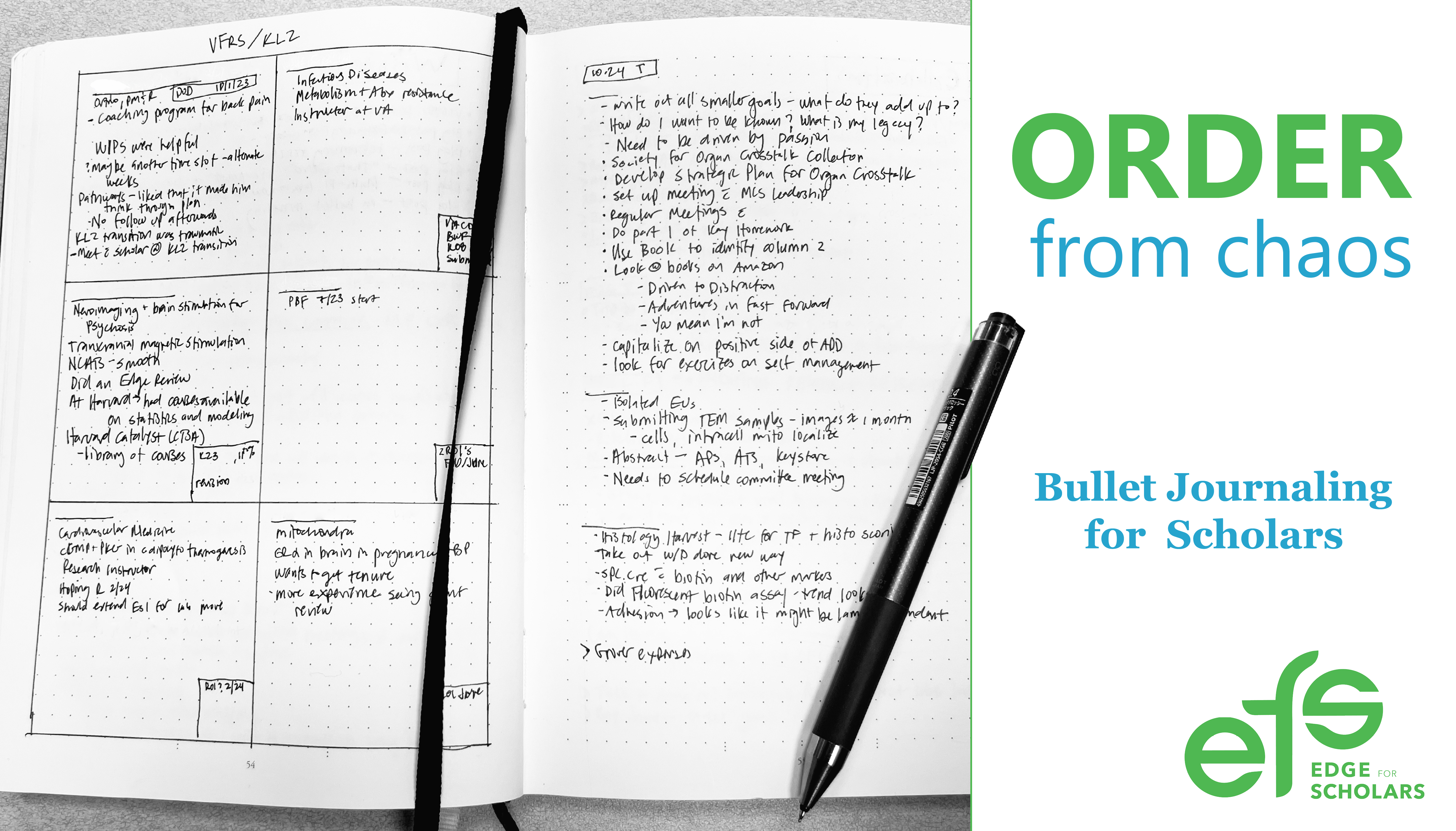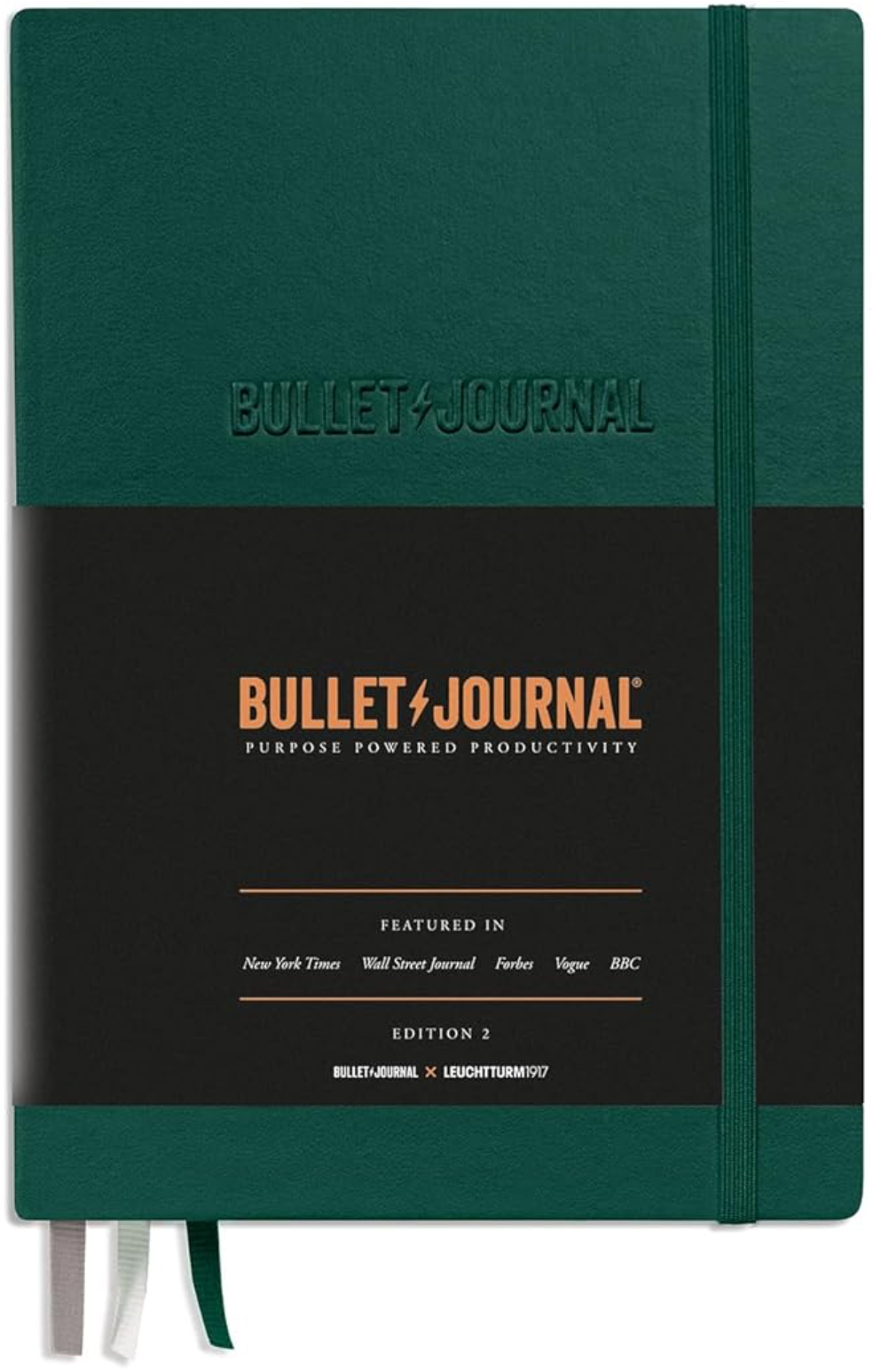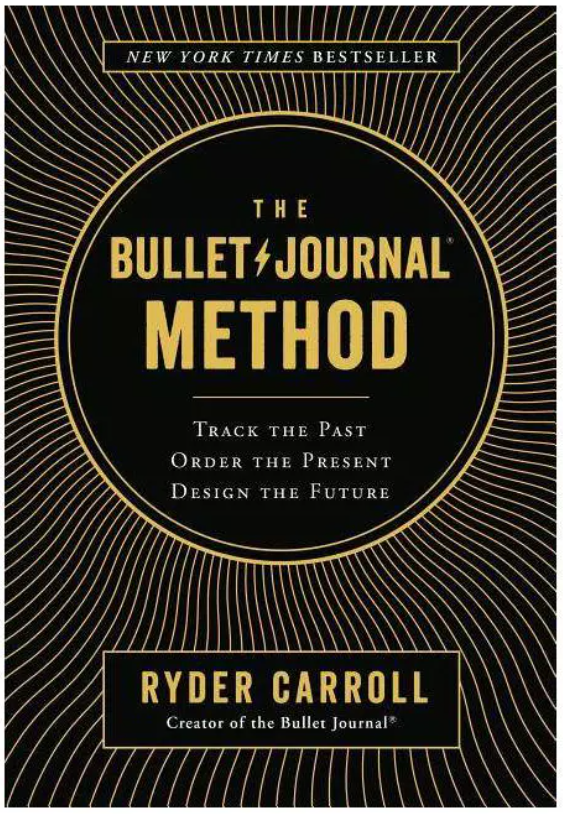Order from Chaos

For the last few years I’ve been juggling more and more balls. I was barely able to keep up with the endless emails and tasks – both at work and at home – and I felt like I was on the verge of losing control. On top of that, my long-term goals remained vague notions and even my short-term goals were stalled. Things came to a head this fall with a series of forgotten meetings, incomplete tasks and a missed major grant deadline that left me in tears. Thanks to a great program in the Department of Medicine at VUMC, I applied for and was provided a career coach. At our first meeting we discussed my struggles at length. She asked something transformative, “Have you heard of Bullet Journaling?”
I hadn’t. If you have, and practice Bullet Journaling (aka Bujo), you are probably jumping up and down right now shouting, “Yes!! Yes!!” If you haven’t, let me tell you a bit about how a single notebook and innovative method developed by Ryder Carroll have changed my life. No exaggeration.
 The philosophy of Bullet Journaling is simple – keep everything in one place. Prior to bullet journaling I had a paper to do list (that I often lost), one notebook for meeting/conference notes, one notebook for projects, one notebook for journaling and separate calendars for work and home. Bullet Journaling puts all of that in one place.
The philosophy of Bullet Journaling is simple – keep everything in one place. Prior to bullet journaling I had a paper to do list (that I often lost), one notebook for meeting/conference notes, one notebook for projects, one notebook for journaling and separate calendars for work and home. Bullet Journaling puts all of that in one place.
The system of Bullet Journaling developed by Ryder Carroll is simple. My favorite aspects are:
- The Daily Log. This is the place where you write everything down. Things to do, crazy ideas, notes from meetings, thoughts and feelings about people or events. Literally everything gets written on the daily log. I even take my bullet journal to bed with me to capture those random thoughts that come when I’m trying to fall asleep.
- The Monthly Log. This is a combination of a short form of your calendar and a running To Do List that you populate and review daily.
- Collections. Each Collection starts as a single page with a heading on a particular topic. For example, I have pages for specific responsibilities (Edge for Scholars), larger tasks (R01 submission), projects (Epithelial Hemoglobin Project), groups (Collaborators), personal items (House Projects) and many more. Any time I have an idea bigger than one task, I make a new collection.
- The Index. Pretty self-explanatory. Goes at the beginning.
The practice of Bullet Journaling includes 5 minutes of review and reflection at the beginning and end of each day during which items from the daily log are migrated to their appropriate locations and a moment is spent thinking about what went well (or not) that day.
 I’ve been Bullet Journaling for about two months now and the results are truly remarkable. I have cleared much of my task back log, had time to plan and make progress on both short and long term goals, and I haven’t missed a single meeting or deadline! It has been so beneficial that I am motivated to keep it up and even grow my bullet journaling methods. There’s a lot more to Bujo which you can learn about in an excellent book (The Bullet Journal Method: Track the Past, Order the Present, Design the Future: Carroll, Ryder: 9780525533337: Amazon.com: Books, I was able to read it in less than a day), a website (https://bulletjournal.com), and a growing community of bullet journal practitioners.
I’ve been Bullet Journaling for about two months now and the results are truly remarkable. I have cleared much of my task back log, had time to plan and make progress on both short and long term goals, and I haven’t missed a single meeting or deadline! It has been so beneficial that I am motivated to keep it up and even grow my bullet journaling methods. There’s a lot more to Bujo which you can learn about in an excellent book (The Bullet Journal Method: Track the Past, Order the Present, Design the Future: Carroll, Ryder: 9780525533337: Amazon.com: Books, I was able to read it in less than a day), a website (https://bulletjournal.com), and a growing community of bullet journal practitioners.
If you are struggling with organization and productivity like I was, it just might be the solution for you too.
RELATED TOPICS
Tune the When, How Much, and What in Your Days
Tools for Making Progress in Academic Life






1 Comment